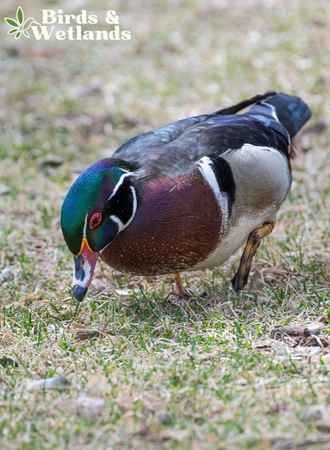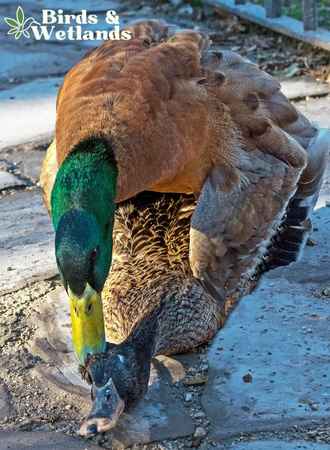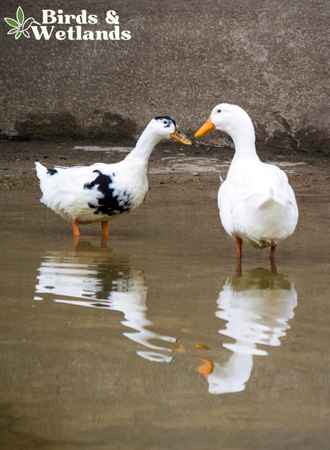Ducks are interesting creatures with some strange behaviors. One of the most baffling is their propensity to stand on top of each other. But what is the reason for this and what does it mean? Let’s take a closer look at duck behavior to find out!
Key Takeaways on Why Do Ducks Stand on Each Other
Ducks may stand on each other to assert dominance, establish the pecking order and determine who is the leader of the group.
The odd behavior of standing on each other happens more often in groups of female ducks than drakes.
A male duck standing on top of a female is how ducks mate.
How Does Duck Pecking Order Work?

The pecking order of ducks refers to the social hierarchy within groups of ducks. This pecking order is largely established and maintained by aggressive behaviors, such as displays of dominance and antagonistic interactions, such as chasing, pecking, and biting.
Typically, ducks establish their position and display dominance within the flock based on age, with younger ducks occupying a lower position than older ducks. However, other factors, such as size and strength, can also influence the social status of ducks.
More dominant ducks generally have greater access to feeding sources and areas to rest than less prevalent ducks.
Do Female Ducks Stand on Top of Male Ducks?
A common misconception is that female ducks frequently stand on top of male ducks. In reality, this rarely happens because it takes a lot of strength and effort to stay atop another bird while it’s swimming or flying.
Instead, we see female ducks standing on top of other females while head bobbing or male ducks on top of females, frequently resulting in violent disputes between the birds. In some cases, the male will bite at the neck of the female and push her under the water.
Males are the dominant sex in most duck species and, thus, tend to take charge when forming groups or deciding where to go to breed and search for food.
What Does It Mean When a Male Duck Gets on Top of a Female Duck?

When a male duck climbs on top of a female duck, he attempts to assert his dominance and gain control of the female. Waterfowl are more prone to this behavior, known as “forced copulation,” than other types of birds. The ducks’ physical posture may appear unthreatening, with both birds standing upright on land or floating on water.
On the other hand, a drake that tries to force copulation can be very aggressive and injure or even kill a female of the same species in his attempts to mate with her. Males may engage in forced copulation to pursue fathering additional ducklings.
In some cases, multiple males may attempt to mate with a single female at the same time. Polyandry is a behavior that has been observed in several waterfowl species, including mallards, pintails, and teals.
Why Do Ducks Attack Each Other?
It is not rare to see ducks fighting with each other. Duck aggression can be caused by various factors, including dominance, competition for mates, and competition for food.
Aggressive displays of these cute animals can be an effective way for ducks to establish a dominant hierarchy among their peers to maintain power and ensure their place at the top of the pecking order.
Another example is when male ducks or drakes frequently engage in aggressive displays when competing for the attention of female ducks or potential mates. Because most duck species have extremely complex mating rituals, these displays may play a significant role in determining which males get to mate with available females.
Many species of ducks are often highly social creatures congregating in large groups; competition for food and territory can also result in individual fights.
Duck aggression is best understood by examining these three driving forces — a simple dispute over duck feed or a full-fledged turf war between families or cliques.
Additional Information on Duck Behaviors

Female ducks frequently demonstrate and call in order to provoke males to attack or fight other males (drakes) or females.
Generally, ducks are seasonally monogamous. This means that a male and female duck will form a mating bond that only lasts for a year. During mating season, pairs will share nesting ground.
Ducks are known for their elaborate courtship displays in the fall or winter such as raising their wings and heads. They also make different sounds while courting an egg-laying female.
Apparently, drakes have a more vibrant and colorful body and head plumage than females.
Some drakes will search for other females once their mates lay their eggs and begin incubation in their nest. Others will stand to watch for potential predators.

